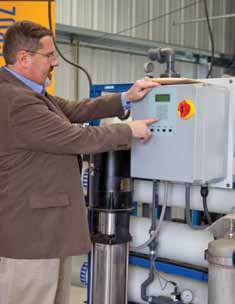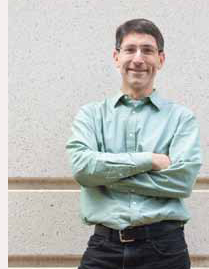It may be too late to pray for rain.
For most of California, 2013 was the driest year in recorded history, and so far, 2014 is looking like more of the same. The state is now running into three dry years in a row. Statewide, according to an April 1 survey, the seasonal snowpack was 32 percent of the average.
Meanwhile, California's big rivers, including the Sacramento and San Joaquin, have dramatically less surface water, groundwater levels throughout the state have dwindled, and most reservoirs are far below their historic levels.
While the state has had droughts before, most notably in 1976, conditions like these haven't been seen before in California's recorded history— while longer-term history suggests that the past century has been unusually wet.
Gov. Jerry Brown declared a water emergency on Jan. 17, calling for statewide 20 percent voluntary cutbacks, and some communities are rationing.
The severity of the drought will inevitably affect one thing that's central to everyone: food. Grocery bills will likely go up because fewer acres of land are being planted and crop yields are shrinking, and the drought could prove devastating to those served by food banks.
Now, even a series of serious downpours may not be enough to make up the difference.
For most of us, water has been reliably provided out of the faucet at a very economical cost. But there's no guarantee that there will be enough water in the future for everyone.
What, then, are the solutions to this statewide problem? UCSC researchers Brent Haddad, Ruth Langridge, and Andy Fisher, anticipating possible future water crises, have been working on options, from conservation to recycled water to the creation of water reserves.
Options beyond the traditional
Brent Haddad, professor of environmental studies and technology management, and director of UCSC's Center for Integrated Water Research, was giving a tour of the Water Teaching and Research Laboratory (WaterLab) established by the center and the city of Watsonville.
He stood in front of a machine that looked like the figment of a sci-fi novelist's vivid imagination— a long, snaking device composed of cylindrical white-painted tanks, with coils, wires, and dials.
This device, known as a reverse osmosis system (which some bottled water companies use), takes previously treated wastewater and seawater and makes it so clean that anyone could drink it safely.
No water is allowed to leave the facility; it is strictly a laboratory. But if WaterLab shipped its water offsite, it could supply a steady flow of water that is safe for consumers.
The success of the osmosis machine gives Haddad hope that Californians have options far beyond their traditional sources, which he believes rely much too heavily on snowpack and rainfall.
California communities, especially in drought years, are vulnerable if they rely, for instance, on two or three reservoirs fed by rivers that flow closely together. Such cities and towns are at the mercy of rainfall; when the water doesn't fall from the sky, the supply shrinks, Haddad said. Santa Cruz, for instance, is almost entirely dependent on rainfall for its water supply, and the San Lorenzo River, which supplies most of the water, is at a near-record low.
Haddad said that such rainfall-dependent cities should look into diversifying sources. He cited a range of options, from surface water to groundwater, treated recycled water, and desalination.
In one sense, now is a good time for Californians to confront the issue of water supply, and consider these various options, because a crisis forces leaders to focus, Haddad said. On the other hand, "it is also a bad time because the need for water is so immediate. We need to do thoughtful, long-term planning while being aware that there are crises from time to time, and we happen to be in one now."
So far, Californians haven't exactly warmed to the idea of drinking water recycled from sewage, no matter how expertly it is treated, although many areas, including the Pajaro Valley and Salinas Valley, already use reclaimed water in agriculture.
But Haddad predicts the statewide resistance to drinking recycled water could change; historically, the state's most heavily populated areas including Southern California have relied on water "imported" from northern and eastern sections of the state, but environmental degradation has made the future supply uncertain. Some areas of Southern California already are supplementing their drinking water with highly treated reclaimed water that they store in groundwater aquifers.
Desalination plants are another response to shrinking water supply. "The value of a desal plant depends in part on how prone all the other water supplies serving a region are to a drought," Haddad said. "The greater the overall drought risk, the more valuable the reliability of a desalination plant becomes."
Other possibilities include "drought banks" set up between farmers and neighboring communities and the creation of water reserves through joint agreements.
Solutions through good policy
Californians have allowed themselves to be taken by surprise by the dry years, said Ruth Langridge, a UCSC research associate in social sciences. On the bright side, she thinks it's not too late for the state to learn from its past mistakes.
But a better water policy would require a dramatic departure from the past, she said.
Langridge, a water policy expert, likes to quote a famous line from John Steinbeck's East of Eden: "… it never failed that during the dry years the people forgot about the rich years and during the wet years they lost all memory of the dry years. It was always that way."
The past century was "mostly wet until now," and the enduring wetness influenced policy decisions for many years, she said. "What do we do? We expand our agriculture and, during the wet years, we say, 'We now have all this water, so let's do that development we wanted to do,' and it tends to make us more vulnerable down the road because now we need even more supply during dry years."
She also puts some of the blame on developments that were green-lighted in the years before "show me the water laws'' required builders to show where their water supply would come from before breaking ground.
While Langridge said low-flow toilets and "recycled water" strategies can help, communities still leave themselves vulnerable if they don't have reliable water reserves.
But how should communities get those reserves? During rainy years, instead of falling back on old patterns and using up more water, communities could use some water to refill aquifers so that groundwater pumping, during inevitable droughts, won't threaten to dry up the resource, she said.
Unfortunately, this has not occurred in many regions of California, as witnessed by the continued decline of groundwater levels despite the past 100 years being relatively wet and despite having built major storage and transmission systems that were supposed to address water shortages, Langridge said.
She pointed out that drought depends not just on dramatically reduced supply but on severe demand. For example, California in recent years has been producing a bumper crop of almonds, edging out even the Middle East. As almonds have replaced less "thirsty" annual crops, the net effect is the need for more water. "When there is a shortfall of precipitation where the farmer initially could have adjusted, the farmer is now experiencing the shortfall as a major drought," she said.
Climate change only part of the story
A recent New York Times story delved into a dispute between scientists about just how big a role climate change is playing in the most recent drought, with several experts blaming some of the problem on "natural variability" of rainfall. But UCSC Earth and planetary sciences professor Andy Fisher said that for California, warming climate was merely "the icing on the cake." Changes in land use also contribute to reductions in groundwater supply.
"Imagine what Pajaro Valley looked like 200 years ago," he said, referring to the now highly populated southern reaches of Santa Cruz County. Once, the area was rolling coastal forests. "Now there's lots of cover, cement, asphalt, and agricultural fields that are sometimes covered in plastic, or housing developments and roads."
Once-overflowing aquifers are not getting the rainfall they need because the water cannot permeate. Fisher and his colleagues are exploring ways to get more water into aquifers, using a set of techniques known as managed aquifer recharge. "This approach is already being used in this region and throughout the world," Fisher said, "but we'd like to see how it can be done more commonly, efficiently, and reliably."
None of UCSC's water experts has any simple resolution to a potential water crisis in mind. "It's going to be a combination," Fisher said. "We will need to pursue multiple approaches. There isn't going to be any one solution.
"None of this will be cheap," he continued. "But it will be necessary."



